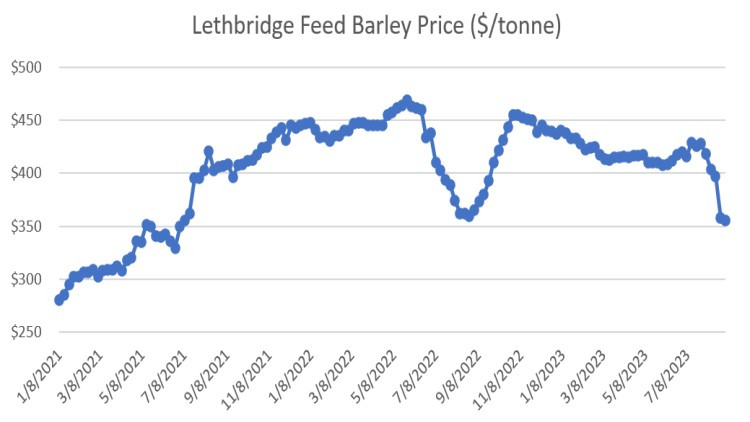Non-urgent government operations are closed December 24 to January 1, reopening January 2. View available services during this period.
See event listings and more articles in this edition of Agri-News: September 18, 2023 issue
“A look at weekly average feeder prices for 550-pound and 850-pound feeder cattle indicates that from January to September 1, 2023 (year-to-date), prices were 44% and 40% higher than the same period in 2022, respectively,” says Ann Boyda, provincial livestock market analyst with the Alberta government. “Although feeder calf prices were higher, variance in pricing was greater than that of the same period last year.”
Regionally, for the first half of 2023, prices for 550-pound feeder calves were slightly higher in the south at $336.25/hundredweight (cwt) as compared to the central and north regions ($329.03/cwt and $328.20/cwt, respectively).
“What factors have contributed to this strength, and can they be sustained? Answers to this question rely on supply and demand factors,” explains Boyda. “Generally, feeder supply is dependent on what is happening in the breeding herd and calf crop, but can also be influenced by weather, price expectations and seasonality. Demand falls back to economic performance in the sectors. Prices of feeder cattle are typically bid up if feeding operations are profitable.”
Statistics Canada reported the number of calves born in Alberta rising from 1.685 million head in 2018 to 1.77 million head in 2021 but declining to 1.76 million head in 2022. January to July 2023 data suggests a further decline of 4.1% over the same period in 2022. Producers reduced their herds and subsequent production in response to the dry conditions. As of July 1, 2023, beef cow inventory was steady and heifer replacement dropped by 3.5% from July 1, 2022.
“Feeder prices are also dependent on the expected slaughter cattle price and the anticipated cost of gain. The Chicago Mercantile Exchange (CME) nearby futures contract prices adjusted by the Canadian exchange rate and basis, provide a good estimate of expected slaughter prices.”
Chart 1. CME Nearby Contract Futures Prices

“Cost of gain can be variable,” explains Boyda. “Feed costs are the most important component. The fall of 2022 witnessed dramatic increases in feed barley prices, but 2023 has seen some moderation.”
Chart 2. Lethbridge Feed Barley Price

“In addition, it is recognized that weather can be the greatest factor in price swings. Current drier conditions in parts of the province have some cow-calf producers marketing some of the yearling crop sooner. Higher feeder prices are also pulling more stock,” says Boyda.
For more information, see:
Contact
Connect with Ann Boyda for more information:
Phone: 780-422-4088
Email: [email protected]
Sign up for Agri-News
Start every Monday with the week’s top agricultural stories and latest updates.
Read about all things agriculture at Alberta.ca/agri-news